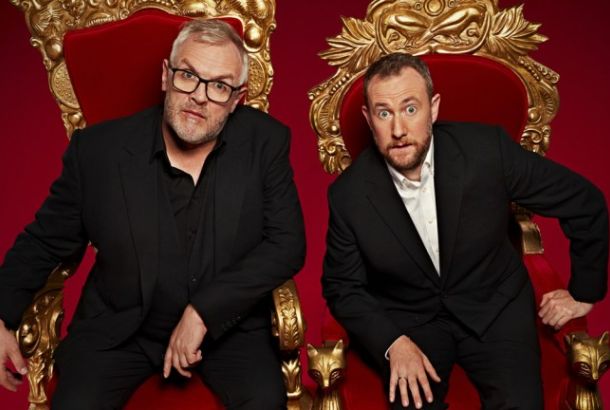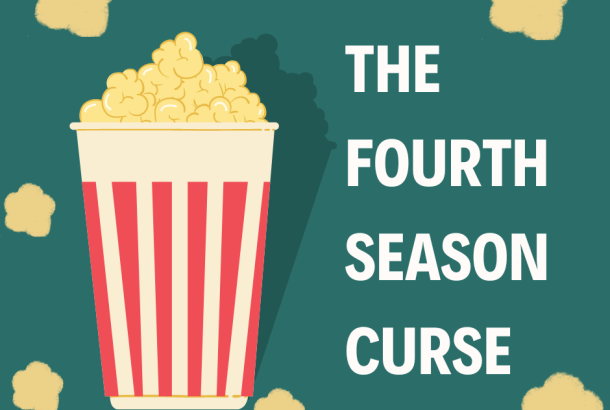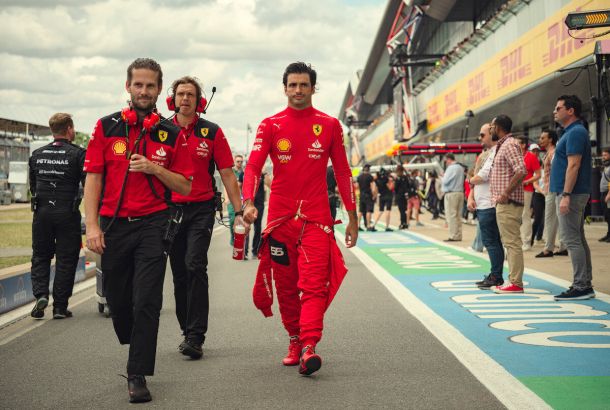Daisy Jones and The Six: Drugs and desire
By Belle Lewes

Amazon Prime’s Daisy Jones and The Six, an adaptation of Taylor Jenkins Reid’s novel of the same title, is the most recent phenomenon to reach our screens. It’s glamorous with a brilliant soundtrack and perhaps the best costumes I’ve ever seen on television. It follows the lives of Daisy Jones (Riley Keough) and the members of her band, The Six: Karen (Suki Waterhouse), Graham (Will Harrison), Eddie (Josh Whitehouse), Warren (Sebastian Chacon), and Billy (Sam Claflin).
Trigger warning: Discusses addiction, substance abuse and self-harm. Contains spoilers.
Its beautiful cast represents the tumultuous freedom of the 70s music scene with love, friendship, and hatred, all laced with narcotics and alcohol. After all, rock music naturally endorses the sexual chemistry that all the musicians had with losing control. However, this adaptation leaned into all the stereotypes of the 70s, too. Daisy and Billy, along with many other artists of the era such as Stevie Nicks, Blondie, Queen, and Pink Floyd, are all romanticised as living the dream of sex, drugs, and ‘Rock & Roll’.
Although the series borrows the branding of the novel, the stories in the book and its TV adaptation significantly diverge in their main focus. While the novel delves into personal battles with identity, family, and addiction, the show prioritises romantic relationships, ultimately praising the protagonists’ destructive lifestyles. By downplaying the complex psychological and physical issues associated with substance abuse, the writers reduce them to nothing more than an element of a grand, stunning love story. Yet, the vices showcased create a sexualised temptation that would not be as desirable without such hedonism.
We enjoy watching the characters toe the line between freedom and the consequences of their addiction. However, the marketing of the show as a love triangle involving Daisy, Billy, and Camilla (aka ‘the other woman’) neglects other important storylines present in the book, such as Eddie’s jealousy and the tragic love story of Karen and Graham. Not only are these stories sidelined by the protagonists, but also by the programme itself.
Consequently, the excessive focus on Daisy and Billy endorses their forbidden affair, which may lead viewers to accept destructive behaviour use as a desirable means to an end regardless of its negative consequences. In other words, while the programme highlights some of the problems with infidelity, if the audience approves of it, they will more likely glamourise drug use too, encapsulating this freedom and submitting to temptation.
Furthermore, the portrayal of Daisy’s addiction is highly sexualised, presenting temptation as alluring and seductive rather than problematic. As a descendant of Elvis Presley, Keough was desperate to present addiction in a damaging light due to her own family’s history. Fortunately, the series does condemn substances in a few ways. For example, Daisy hurts herself on stage which ultimately represents the breaking point for her mental health.
There are notable divergences between the book and the show regarding the portrayal of the central characters’ relationships. In the book, a recurring theme is Camilla’s status as Billy’s true love, while Daisy is depicted as a mere infatuation and an unattainable object of desire, much like alcohol. Daisy’s entry into Billy’s life during his early sobriety after rehab represents his temptation, and when Camilla asks Daisy to leave for Billy’s sake, it symbolises a decisive end to his temptation and a denial of drugs’ power over him.
Conversely, the series takes a different approach by hinting at a possible happy ending between Daisy and Billy, even after their second kiss, which is absent from the book. In the book, Billy prioritises his health and his children with Camilla. However, in the series, their love story intensifies the tension and desire between the two, culminating in a climactic moment where Billy finally succumbs to his temptation. The show underscores the central role of substances in their relationship, evident from Daisy’s cocaine use during their writing sessions, which serves as a catalyst for their bond, sexual tension, and eventual romantic involvement.
The viewers are rooting for Billy and Daisy’s love story, and their second kiss intensifies the pain of Billy’s decision to return to Camilla. Their substance abuse further complicates the situation, tempting them to indulge in their deepest desires. Ultimately, the show emphasises the primacy of Billy and Daisy’s love for one another over addiction and other important themes present in the book, such as female empowerment, platonic relationships, and familial obligation.
If Daisy had found her freedom independently, the portrayal of narcotics in Daisy Jones and The Six would likely have been overwhelmingly negative, promoting a healthy perspective on the detrimental effects of substances. However, Billy rescues Daisy from the overdose that nearly takes her life, and it is because of him that she separates from Nicky and leaves behind her toxic relationship with stimulants. The show does not document Daisy or Billy’s journey towards sobriety but instead focuses on various forms of temptation.
If Daisy Jones had followed the novel’s plot, in which Daisy discovers happiness on her own, and Billy chooses to remain with his wife and family, the temptation of drugs, symbolised by Daisy and Billy’s relationship, would have been limited and concluded chapter in their lives. Unfortunately for Daisy, she sees Billy as a symbol of her ability to manage her drug problem and attain her freedom. At the same time, Daisy’s alleged management of her addiction is also the ultimate temptation for Billy.
Daisy, as a symbol of freedom, hinders her personal growth since she abandons her harmful relationship, although she still embraces a kind of drug use that was celebrated in the 70s as liberating but ultimately unmanageable (just like Daisy and Billy: sexual, beautiful, and free). Seeing Daisy raise her child alone, sober, and fall in love again in healthy relationships would allow the viewer to desire different forms of urges and satisfaction.
The show allows temptation to ultimately win out, with Billy’s family unit collapsing, and Daisy reuniting with Billy, demonstrating that their love for each other is infinite and more prevailing than external powers. Therefore, their addictions are similarly infinite. Camilla’s relationship with Nicky is also based on substance misuse, and it displays the balance between the ‘freedom’ stereotype of narcotics along with the harsher and sadder reality of control. Nicky symbolises the controlling and depressing side effects on Daisy, as she becomes a victim in an abusive relationship with her husband on whom she is just as dependent as on cocaine. A montage of Daisy and Billy both reaching and enjoying their sobriety, with their relationship being an addition to their already fulfilled lives instead of one of yearning and tension, could have allowed the love story to prevail without alluding to falling victim to temptation.
Is it dangerous in the 21st century to continue portraying these detrimental relationships in a positive light? Somewhat. However, the temptation for immorality has always been present in the arts, it’s nothing new. In this instance, however, substances represent the satiation of the viewer’s own temptations. The series is a must-watch, as each character is enchanting, and it provides a perfect absorption into the reality of 70s music scene. Daisy Jones and The Six is truly a story of sex, drugs, and rock and roll (as well as love, hate, and family). Make sure to give it a go!







